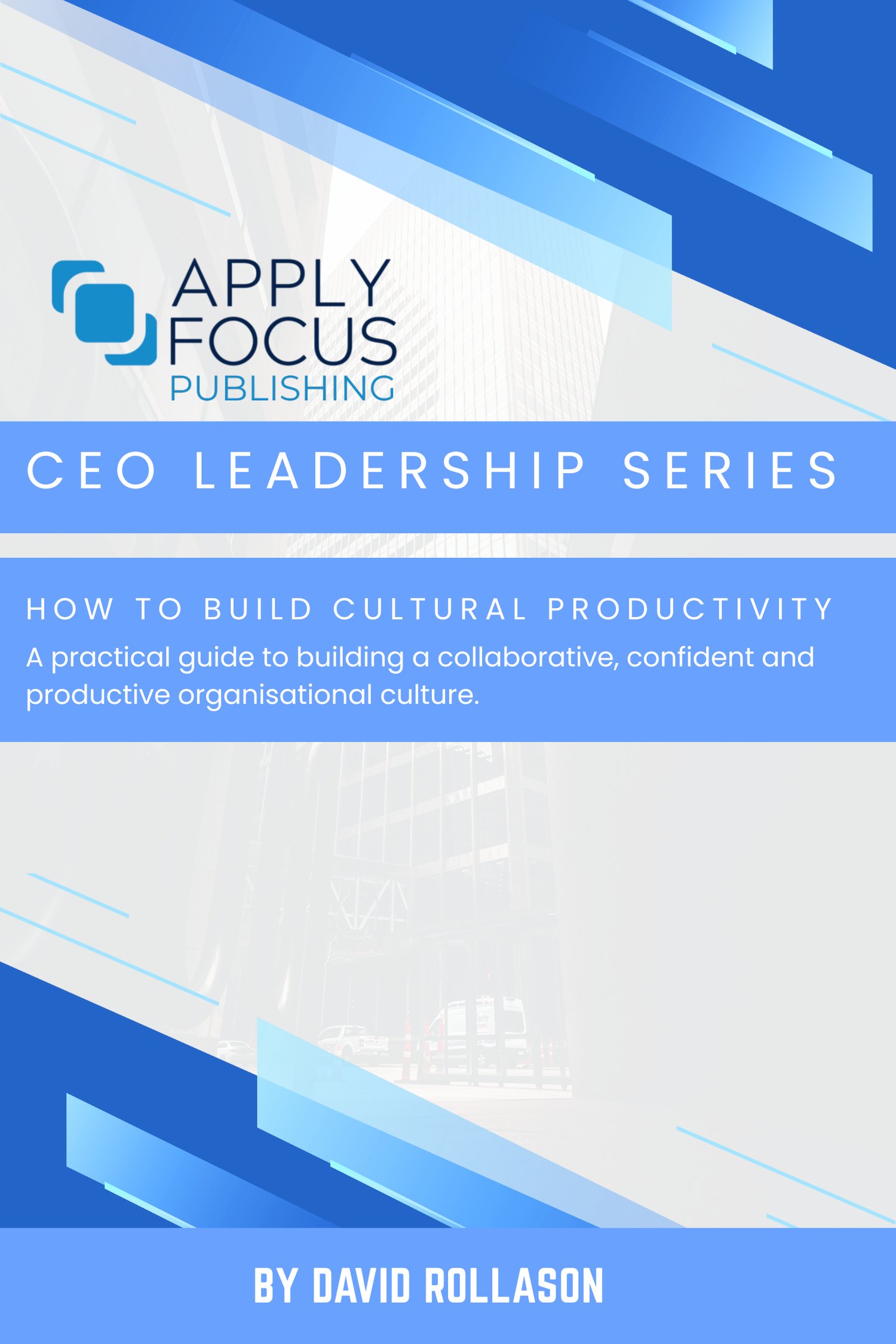
How to build Cultural Productivity.
How to build Cultural Productivity.
First Edition, By David Rollason.
Every organisation depends on its people. Their decisions, their behaviour and the way they work together determine the strength of performance. Yet many organisations struggle with internal friction, unclear priorities, unnecessary stress and avoidable conflict. These problems do not come from lack of talent or effort. They come from culture. Culture is not abstract. It is the environment that shapes how people behave and how work gets done. When culture supports clarity, cooperation and shared purpose, organisations make faster progress with less strain. When culture is weak or inconsistent, progress slows and frustration rises.
This book explains how to build cultural productivity. Cultural productivity is the ability for people to work together effectively, respectfully and with a shared understanding of priorities. It is not about working harder. It is about working better. It is about removing barriers that waste time and energy. It is about helping people feel confident, informed and supported. Cultural productivity does not appear automatically. It must be built through clear expectations, consistent behaviour and leadership that models the culture every day.
The chapters in this book are practical and direct. They offer a clear understanding of how culture influences performance and how to create an environment where people can do their best work. This work starts with leadership, but it belongs to everyone. Culture is shaped in every meeting, every decision and every interaction. The more consistently the culture is reinforced, the stronger it becomes.
This is not a theory-heavy book. It does not rely on slogans or motivational language. It focuses on real behaviours and real organisational dynamics. The aim is to provide a framework that any leader, team or organisation can use to strengthen teamwork, reduce friction and build a stable environment for long-term success.
Cultural productivity supports people. It reduces stress and uncertainty. It helps people collaborate more easily. It helps organisations retain good people. It allows work to flow more smoothly and predictably. Most importantly, it creates workplaces that are calm, respectful and purposeful.
Culture cannot be ordered or installed. It must be built. It must be lived. It must be reinforced. When cultural productivity becomes the daily standard, organisations experience fewer internal obstacles and greater collective achievement. This book is written to help you build that environment.

